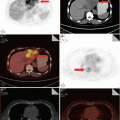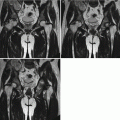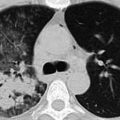© Springer Science+Business Media Dordrecht and People’s Medical Publishing House 2016
Pu-Xuan Lu and Bo-Ping Zhou (eds.)Diagnostic Imaging of Emerging Infectious Diseases10.1007/978-94-017-7363-8_11. Introduction of Emerging Infectious Diseases
(1)
Department of Radiology, Shenzhen Third People’s Hospital Guangdong, Shenzhen, China
(2)
Department of Infection, Shenzhen Third People’s Hospital Guangdong, Shenzhen, China
(3)
The Shenzhen No.3 People’s Hospital, Guangdong College, Shenzhen, China
1.1 Definition of Emerging Infectious Diseases (EIDs)
Emerging infectious diseases (EIDs) refer to contagious diseases newly appeared, or with drug resistance, whose incidences have been rapidly increasing and are likely to further rise in the future. EIDs are usually discovered in three ways. Firstly, some existing diseases are ascertained as EIDs due to the recent discovery of pathogens. Secondly, previously considered noninfectious diseases are identified contagious as a result of new etiological findings. Thirdly, new infectious diseases are incurred by various complicated reasons such as evolution of pathogens. Due to their uncertainty and unpredictability, EIDs could result in high mortality and great impacts on social stability and economic development as people are unable to react immediately and take specific preventive or control measures. Therefore, EIDs have become a major public health problem worldwide. Cases in point are the epidemics of SARS in 2003 and H7N9 avian influenza around 2006, which have eloquently demonstrated their great threats to human health, society, and economy. In the coming twenty-first century, contagious diseases are expected to remain as a crucial public health concern for countries around the world.
1.2 Classification of EIDs
At present, more than 40 kinds of EIDs have been found worldwide, and over 30 kinds have been reported successively in China. EIDs can be classified into the following five categories.
1.2.1 EIDs Caused by New Pathogens
Such contagious diseases did not exist in the past and newly emerge due to new pathogens such as AIDS, severe acute respiratory syndrome (SARS), human infection with highly pathogenic avian influenza H5N1, influenza A (HlN1), and human infection with avian influenza H7N9.
1.2.2 EIDs Caused by New Variant Strains
Such diseases are caused by new variants mutated from existing pathogenic microorganisms. For example, current study suggests that Vibrio cholera O139 may be the result of genetic mutation of O1 serogroup.
1.2.3 Newly Acknowledged EIDs
Some existing diseases are not recognized as EIDs until recently, such as hepatitis D and E, legionnaire’s disease, and Lyme disease.
1.2.4 Existing Noncontagious Diseases Redefined as EIDs
Some existing diseases considered noninfectious are found contagious in recent years, such as peptic ulcer caused by H. pylori and T-cell leukemia.
1.2.5 EIDs Endemic in Some Places
Contagious diseases endemic in some places become prevalent in new places and then are generally considered as EIDs, such as West Nile virus (WNV) that was once popular in Middle East and Europe and broke out in the USA in 2012.
1.3 Epidemiology of EIDs
1.3.1 Prevalence Characteristics
Pandemic and subject to multiple influential factors. For example, diseases like Lyme disease, Legionnaires’ disease, and peptic ulcer disease are globally distributed, SARS appears in 32 countries and regions, and BSE rages over 22 European countries.
Highly contagious and complex in dissemination routes. EIDs like Ebola hemorrhagic fever, SARS, West Nile encephalitis, and mad cow disease are all highly contagious through various channels.
Fast transmission with severe damages. AIDS, described as super cancer and the top killer in twentieth century, has been spreading across the world in an astonishing speed since diagnosed in 1981. In 2003, both the outbreak of SARS in spring and the highly pathogenic avian influenza H5N1 after mid-December caused casualties and huge economic losses. SARS, human avian influenza, and influenza HlN1 have all become rampant worldwide in a short time. Besides, convenient transportation and close international contacts also facilitate their spread.
Zoonotic. More than three quarters of EIDs are zoonotic and closely related to animals. Researches by Jones et al. revealed that 60.3 % EIDs were zoonotic, with 71.8 % caused by wild animals, such as human avian influenza and Ebola virus.
Difficult to prevent, diagnose, and treat due to the varied pathogens. Pathogens of EIDs mainly encompass viruses, bacteria, rickettsia, and chlamydia, predominantly viruses which are highly elusive and infectious.
Stay updated, free articles. Join our Telegram channel

Full access? Get Clinical Tree








